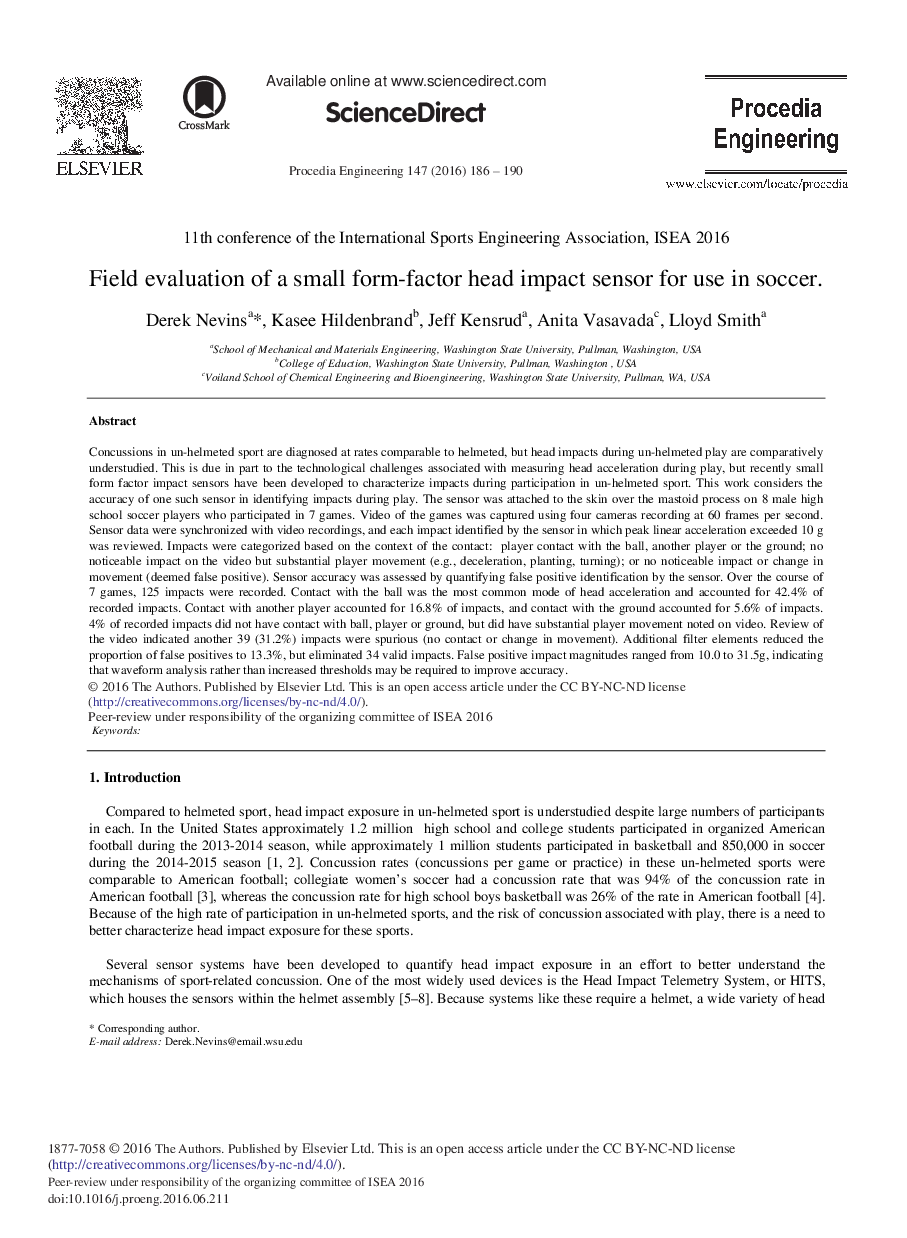| کد مقاله | کد نشریه | سال انتشار | مقاله انگلیسی | نسخه تمام متن |
|---|---|---|---|---|
| 853379 | 1470679 | 2016 | 5 صفحه PDF | دانلود رایگان |
عنوان انگلیسی مقاله ISI
Field Evaluation of a Small Form-factor Head Impact Sensor for use in Soccer
ترجمه فارسی عنوان
ارزیابی صحنه ای از یک سنسور کوچک ضربه گیر شکل دهنده کوچک برای استفاده در فوتبال
دانلود مقاله + سفارش ترجمه
دانلود مقاله ISI انگلیسی
رایگان برای ایرانیان
موضوعات مرتبط
مهندسی و علوم پایه
سایر رشته های مهندسی
مهندسی (عمومی)
چکیده انگلیسی
Concussions in un-helmeted sport are diagnosed at rates comparable to helmeted, but head impacts during un-helmeted play are comparatively understudied. This is due in part to the technological challenges associated with measuring head acceleration during play, but recently small form factor impact sensors have been developed to characterize impacts during participation in un-helmeted sport. This work considers the accuracy of one such sensor in identifying impacts during play. The sensor was attached to the skin over the mastoid process on 8 male high school soccer players who participated in 7 games. Video of the games was captured using four cameras recording at 60 frames per second. Sensor data were synchronized with video recordings, and each impact identified by the sensor in which peak linear acceleration exceeded 10 g was reviewed. Impacts were categorized based on the context of the contact: player contact with the ball, another player or the ground; no noticeable impact on the video but substantial player movement (e.g., deceleration, planting, turning); or no noticeable impact or change in movement (deemed false positive). Sensor accuracy was assessed by quantifying false positive identification by the sensor. Over the course of 7 games, 125 impacts were recorded. Contact with the ball was the most common mode of head acceleration and accounted for 42.4% of recorded impacts. Contact with another player accounted for 16.8% of impacts, and contact with the ground accounted for 5.6% of impacts. 4% of recorded impacts did not have contact with ball, player or ground, but did have substantial player movement noted on video. Review of the video indicated another 39 (31.2%) impacts were spurious (no contact or change in movement). Additional filter elements reduced the proportion of false positives to 13.3%, but eliminated 34 valid impacts. False positive impact magnitudes ranged from 10.0 to 31.5Â g, indicating that waveform analysis rather than increased thresholds may be required to improve accuracy.
ناشر
Database: Elsevier - ScienceDirect (ساینس دایرکت)
Journal: Procedia Engineering - Volume 147, 2016, Pages 186-190
Journal: Procedia Engineering - Volume 147, 2016, Pages 186-190
نویسندگان
Derek Nevins, Kasee Hildenbrand, Jeff Kensrud, Anita Vasavada, Lloyd Smith,
